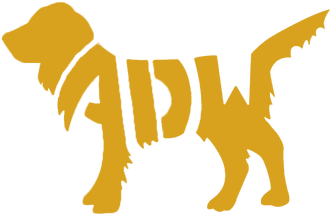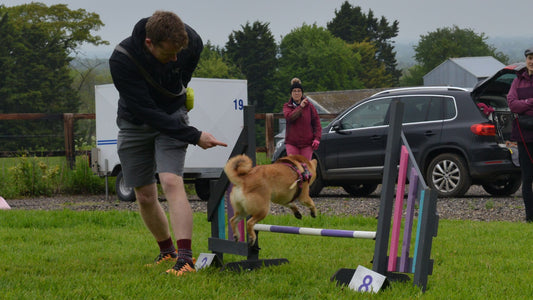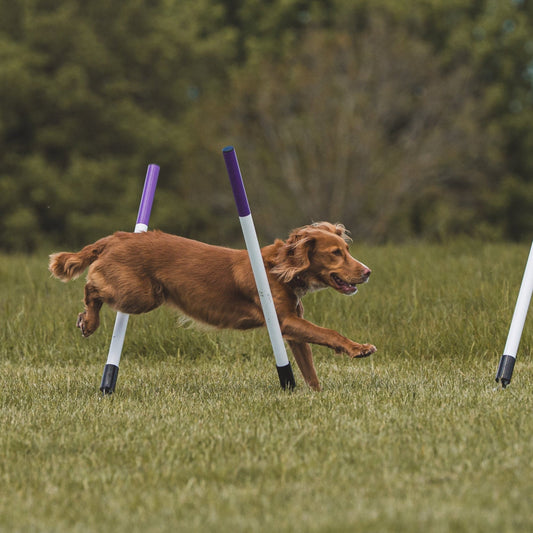Master the Ketshker (German Turn) Agility Handling Move
Mastering the Ketshker (German Turn) for Dog Agility
Whether you’re just starting out or are an experienced handler, mastering the Ketshker, also known as the German Turn, can elevate your agility skills. This guide will help you understand the importance of this move and how to train it effectively.
If you're new to dog agility and want to learn the basics, check out our Beginner Dog Agility Course. For those who want to advance their skills or practice more complex techniques, consider joining our Agility Club Dog Training Classes.
What is the Ketshker (German Turn)?
The Ketshker, or German Turn, is a handling move that involves directing your dog behind you as they navigate a jump. It’s an advanced manoeuvre that helps create a clear path to the next obstacle, making it a useful skill for any handler looking to progress in agility.
Understanding the Pivot and Front Cross
Before diving into the Ketshker, it’s essential to understand some foundational handling moves:
Pivot
A pivot is a stationary move where you rotate on the spot using the same arm. This manoeuvre is great for maintaining consistent direction with your dog and is ideal for beginners learning the basics of dog agility.
Front Cross
The Front Cross involves getting ahead of your dog and switching your driving arm, forcing your dog to change sides. It’s a versatile move for intermediate handlers who want to manage tighter turns on a course. (learn more by clicking here)
Step-by-Step Guide to the Ketshker (German Turn)
How to Perform a Ketshker
Mastering the Ketshker requires practice and precision. Here’s a breakdown of how to execute this move:
-
Approach the Jump
As you approach the jump, turn to face your dog, keeping the jump wing behind you. -
Indicate the Turn
Close to the jump, point low to the take-off point with your leading hand. This directs your dog to follow the intended path. -
Execute the Turn
Once your dog lands and begins to circle behind you, smoothly move forward, keeping the motion steady. -
Return to the Same Side
Your dog should end up on the same side of the jump as you, ready for the next obstacle.

Image Description: A dog performing a Ketshker turn during an agility course, guided by a handler.
Training the Ketshker (German Turn) Step-by-Step
Stage 1: Introducing the Basics
- Set Up: Start with your dog in a sit-stay, facing the jump.
- Reward Placement: Place a reward behind the left wing of the jump.
- Handler Position: Stand on the same side of the jump as your dog, facing them with your back to the wing.
- Release Command: Use a command like "OK" and point across your body using your right arm.
- Reinforce: Allow your dog to collect the reward, repeating 5-10 times to reinforce the move.

Image Description: Demonstration of stage one.
Stage 2: Building Confidence
- Set Up: Position your dog in a sit-stay, facing the jump.
- Handler Position: Stand on the same side of the jump, facing your dog.
- Signal and Release: Use the same signal and release as in Stage 1.
- Reward: After the jump, reward your dog by tossing a treat or toy in the next direction of travel.
-
Repeat: Practice consistently to build speed and accuracy.
Progress:
Repeat stages one and two on the right wing also.
Handler start further away from the jump wing so the dog travels further independently.

Image Description: A handler guiding a dog over a jump with precise hand signals.
If you want more detailed guidance on beginner-level agility training, explore our Beginner Dog Agility Course.
Why Master the Ketshker in Dog Agility?
The Ketshker is a valuable tool for any handler looking to progress in agility:
- Control: It helps manage tight turns and reduces the risk of knocking poles.
- Efficiency: The Ketshker creates a clear, direct line for the next obstacle.
- Versatility: It can be used in complex courses to maintain speed and flow, even when handling from a distance.
For those ready to tackle advanced techniques, consider joining our Agility Club Dog Training Classes, where you can practice the Ketshker and other advanced handling moves.
Tips for Dog Agility Beginners
- Start with the Basics: Focus on foundational moves like the Pivot before attempting more advanced techniques.
- Practice Consistently: Consistent, short training sessions are key to mastering agility. I would suggest 6-10 reps, 3 sets.
- Join a Community: Training with others in an agility club can boost your skills and provide valuable feedback.


